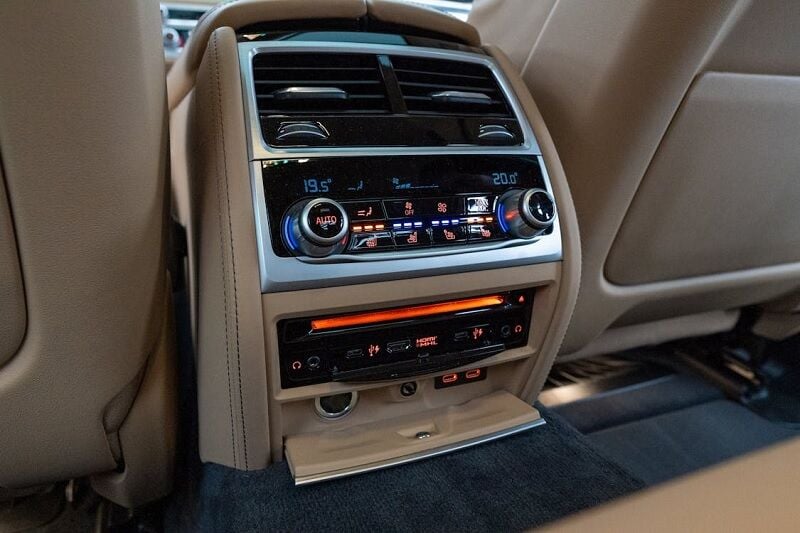How climate control in cars is evolved

In the constantly evolving landscape of the automotive industry, the development of climate control systems exemplifies innovation and the increasing demand for comfort from consumers. Over time, these systems have transitioned from being considered additions to standard features, thereby providing both drivers and passengers with an enhanced and customizable in-car environment. One might ponder how this sophisticated level of climate management in vehicles was achieved and what significant milestones delineate this evolution.
The origin of automotive climate control systems can be traced back to rudimentary heating mechanisms, evolving through stages that include manually controlled air conditioning to today’s fully automated, sensor-driven configurations. This progression has not only elevated comfort levels but also contributed to improved fuel efficiency and a reduction in environmental impact, consistent with worldwide sustainability objectives.
An examination of the historical development and technological advancements within automotive climate control systems reveals a remarkable synergy between engineering excellence and consumer needs. This journey underscores the industry’s dedication to innovation, offering insights into future developments in automotive climate management.
The Advent of air conditioning in vehicles

A pivotal moment in the automotive sector was marked by the advent of air conditioning within vehicles. This innovation heralded a new era of in-vehicle comfort and convenience. Initially regarded as a luxury feature exclusive to high-end models, air conditioning fundamentally transformed driving experiences, particularly in warmer regions, by ensuring cooler interior atmospheres. The introduction of this technology not only catered to enhancing comfort but also signified a shift towards integrating more advanced features for an improved driving experience.
Expansion and development through mid-20th century
Approaching the mid-20th century saw broader acceptance and incorporation of air conditioning across various car models. Manufacturers began recognizing climate control systems as essential components rather than mere luxuries. This period witnessed notable innovations such as hermetically sealed compressors and the inception of fully automatic air conditioning systems. These advancements rendered systems more efficient, reliable, and maintenance-friendly. It was an era defined by rapid progress towards more compact, lighter-weight, environmentally considerate configurations, which formed the basis for today’s intricate climate control technologies found even in geographic areas with challenging weather conditions like Thailand, where such technology is indispensable for ensuring comfort and safety on roads.
The transition from manual adjustments to automated regulation
The transformation from manual interventions using knobs or levers toward autonomous regulation represents a significant advancement within auto manufacturing sectors initially necessitating driver input for temperature adjustments; contemporary setups now autonomously modulate cabin temperatures, guaranteeing optimal comfort levels, employing sensors evaluating interior conditions against exterior changes, including sun exposure automatically adjusting accordingly.
Evolution toward eco-friendly refrigerants
A fundamental shift occurred with the transition away from R-12 refrigerant due to its high ozone-depleting potential toward greener alternatives, significantly reducing environmental ramifications and aligning with global sustainability aspirations, demonstrating a commitment toward preserving ecological integrity while simultaneously enhancing system efficacy performance reliability
Integration with digital smart technologies
The integration of cutting-edge digital smart technologies has further propelled forward vehicle climate control capabilities, facilitating seamless interaction among numerous vehicular subsystems, such as GPS onboard diagnostics, and enabling predictive adjustments based upon anticipated changes derived via navigational inputs Additionally, connectivity enhancements permit remote manipulations over climatic settings via smartphones, epitomizing personalized convenience and highlighting progressive strides toward increasingly interconnected, user-oriented vehicular experiences
These technological leaps collectively contribute toward rendering modern automobiles increasingly comfortable efficient ecologically responsible As continuous innovation persists, it stands reasonable to anticipate further sophistications emerging henceforth, amplifying driver-passenger experienced alike
Promoting passenger comfort through innovative designs
Climate control system evolution greatly influences automobile design, emphasizing passenger ease without compromises Advances enable engineers to optimise airflow distribution, ensuring uniform temperature distributions crucial within larger multi-passenger zones Dashboard console redesigns incorporate newer elements reflecting commitments toward functional aesthetic appeal Hence, present-day vehicles offer ambient environments harmonizing automotive demands, showcasing flawless integration between architecture and internal climatic controls
Safety implications relating to climate control features
Unexpectedly critical roles emerge concerning safety aspects of the adoption of eco-friendly refrigerants, addressing concerns associated with flammability risks alongside EPA stringent regulatory requirements, prompting shifts to safer, non-flammable alternatives Precision thermal airflow management contributes significantly towards mitigating driver fatigue, a prominent accident causation factor Maintaining conducive cabin temperatures aids in keeping drivers alert and comfortable, thus elevating overall vehicular safety standards
Through sustained evolutionary processes, automotive climatic controls emerged as integral elements intertwined within design safety principles, mirroring unwavering industrious dedication to innovation welfare considerations
Anticipated trends and technological advancements
Automotive sectors presently witness transformative trends aiming to amplify passenger comforts while simultaneously addressing energy efficiencies. Predictive technological applications utilizing GPS meteorological data forecast impending zone transitions, adjusting interiors preemptively, and negating manual interferences. Moreover, smart material implementations like thermochromic windows assist in regulating internal temperatures and automatically adapting sunlight exposures, minimizing conditioning efforts. These forthcoming advances promise to render travels exceedingly tailored and intuitive, satisfying every expedition’s requirement
Electric vehicles influencing future designs

Electric Vehicles (EVs) spearhead revolutionary approaches reshaping customary climate controls Unlike traditional combustion engines, EVs necessitate highly efficient mechanisms due to direct correlations between climate manipulation and vehicular range Extensive research endeavours aim to devise innovative solutions for heat pump technologies to outperform conventional electric heaters in cold environments, extracting warmth external air warming cabins conserving battery power extending ranges Pioneering energy-efficient designs is paramount widespread EV acceptance, promising sustainable transportation futures
Sustainability and environmental reflections
Sustainability, alongside ecological impacts, remains the driving force innovating automotive climate mechanisms Industry shifts favouring lesser globally warming potential substances exemplify dedicated pursuits Further technological progress facilitates developing reduced consumption configurations diminishing overall carbon footprints incorporation of solar panels supports supplementary power generation without escalating emissions Continual advances navigating greener pathways ensure not merely comforts but significantly contribute planetary wellbeing
Traversing through automotive climate control evolution highlights overarching themes of innovation and sustainability From initial manual setups advancing towards sophisticated sensor-based arrays, the primary focus persistently remained to enhance occupant comforts whilst reducing ecological footprints Prospective horizons shine brightly predictive capabilities smart material integrations set redefine enclosed vehicular atmospheres Moreover, the advent of electric vehicles presents opportunities establish energy-conservative solutions extending operational ranges diminishing emissions Embracing upcoming breakthroughs guarantees not solely enriched safer voyages but equally fosters steps closer towards sustainable global existence Thus, continual innovations pave promising green futures ahead for automotive
Considering the above-shared details, You can also check out,Are hybrid vehicles the smart choice for Thailand’s future mobility,Hybrid vehicles leverage a dual system comprising a petrol engine and an electric motor, aiming to provide a more eco-friendly alternative to conventional automobiles. Given Thailand’s dynamic blend of densely populated urban areas and extensive scenic routes, hybrids undoubtedly have significant appeal. Yet, beyond their environmentally friendly reputation, it is crucial to examine their actual benefits for drivers in Thailand.
Latest Thailand News
Follow The Thaiger on Google News:


























